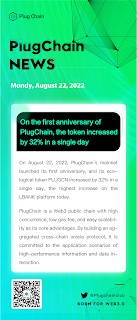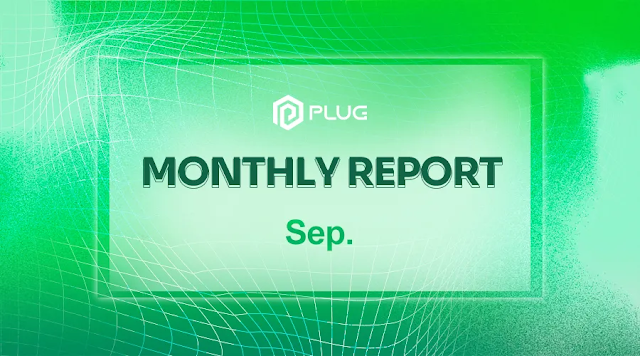PlugChain, the most valuable public chain in 2023: creating a new wave of decentralized oracles!
With
the emergence of new formats in the Metaverse, digital assets have become an
important part of property. Digital currency has gradually become a global form
of currency. More and more people choose to use digital assets, and global
encrypted digital assets are also ushering in a sharp growth. Obviously,
digital assets will be the core "assets" of new finance, benefiting
from the social characteristics of zero marginal cost, which can increase the
overall net rate of return.
As
a digital asset of the underlying technology, the value of the blockchain is
huge, waiting for global users to develop. However, the encryption market still
lacks valuable technology or ecology to tap the potential of digital assets. As
a member of the mainstream public chain, PlugChain relies on its own technology
to cut into the oracle field and provides an entrance: a bridge and window for
data on and off the blockchain, and an intermediary that provides real data
services for the blockchain.
Security,
Ease of Use, Decentralization
We
know security is the cost of gaining control of your network, and usually real world
assets are anchored in the design of the consensus mechanism. For example, the
proof-of-work mechanism (PoW) anchors computing power. Ease of use is the low
performance of the blockchain caused by processing data. The main reason is
that each transaction must be consistent across all nodes.
Therefore,
decentralization means having a large number of nodes participating in block
production and verification. Generally, the more nodes there are, the higher
the degree of decentralization. PlugChain can guarantee decentralization in the
oracle network, ensuring security and ease of use. Aggregate data from multiple
independent nodes to ensure tamper-proof and high availability when the oracle
transmits data to the smart contract. Obtain data from multiple high-quality
data providers to ensure data quality and improve the level of decentralization
at the data source level.
PlugChain
creates a new financial format!
PlugChain
is committed to building a bridge between Web2 and Web3, starting from Web3.0
traffic, and building a world-leading Web3.0 full ecosystem through the
aggregated cross-chain oracle protocol. PlugChain advocates that everything is
born for Web3.0 applications. Any Internet user can directly access Web3.0 and
carry out related activities through PlugChain without any centralized APP or
Dapp. In addition, PlugChain will gather Web3.0 traffic, open Web3.0
applications to users all over the world, and present them to users in a simple
way of participation.
Users
can freely roam between multiple platform applications in PlugChain's Web3.0
full ecosystem, without being restricted by any platform, and enjoy the massive
functions of various DApps. Metaverse, NFT, DeFi, GameFi, public chain and
other technologies and application scenarios are becoming more mature,
objectively forming a global market for digital asset value exchange. With the
advent of the Web3.0 era, driven by the distributed technology represented by
the blockchain, from the decentralized point-to-point ledger experiment to the
decentralized smart contract platform, countless new applications (Dapp), DeFi,
GameFi Formed a "financial service" in the digital world, and NFT
accelerated the on-chain of assets.
It
is not difficult to see that oracles have created a new era in Web3.0, ready to
surpass the ideas and functions of the past. Although there is still little
discussion on the emerging applications of oracles in Web3.0, with the
technical plan and the transition from Web3. A major contribution to Web3.0.
Let's wait and see what surprises PlugChain can bring to the market in 2023!




Comments
Post a Comment